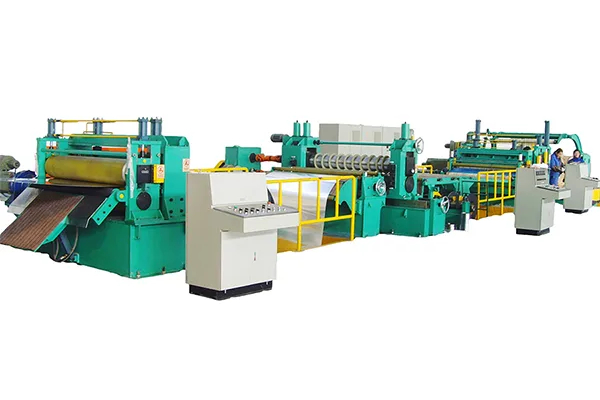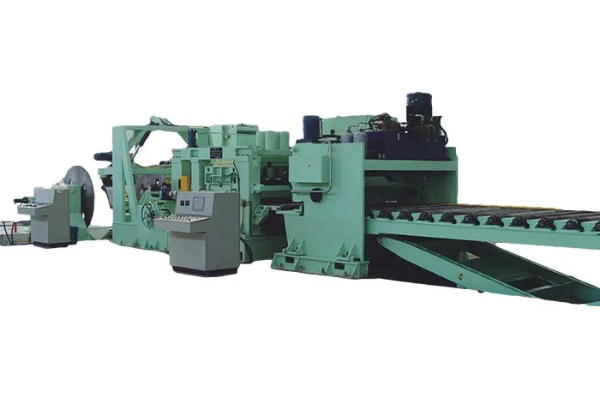
Tips for Setting Up and Optimizing Your Roll Forming Process
- By:Metmac
- 2024-07-30
- 539
Tips for Setting Up and Optimizing Your Roll Forming Process: A Journey to Precision and Efficiency
In the world of industrial fabrication, roll forming stands tall as a cornerstone technology. Just as a sculptor transforms raw clay into intricate masterpieces, roll formers mold metal into complex shapes with astonishing speed and precision. However, setting up and optimizing your roll forming process is an intricate dance that requires a keen eye for detail. Here are some invaluable tips to guide you on this journey:
1. Master the Measure: Accurate Setup
Precision begins with meticulous measurements. Ensure that your raw material is of the correct thickness and width. Properly align the roll stands and adjust the forming head to produce the desired shape. Use a caliper to verify dimensions at critical points throughout the process.
2. Tame the Tension: Controlled Feeding
The flow of metal through the roll former is crucial. Overfeeding can cause wrinkles, while underfeeding can lead to buckling. Use tension brakes to regulate the material advancement. Experiment with different settings to achieve optimal tension.
3. Embrace the Glide: Lubrication and Anti-Sticking
Friction is the nemesis of efficient roll forming. Apply an anti-sticking coating or lubricant to the rolls to minimize friction and prevent buildup. This will not only improve surface finish but also extend the life of your rolls.
4. Calibrate with Care: Sensor Precision
Accurate sensors play a vital role in monitoring the process. Calibrate them regularly to ensure they provide reliable feedback on material positioning and roll pressure. This information is essential for maintaining consistent quality and preventing defects.
5. Dive into the Data: Monitor and Adjust
Once your process is set up, it’s time to monitor its performance. Track key parameters such as material thickness, forming speed, and roll pressure. Analyze the data to identify trends and areas for improvement. Adjust your process accordingly to optimize efficiency and minimize scrap.
6. Embrace Technology: Automation and Control
Consider incorporating automation into your roll forming process. This can enhance consistency, reduce operator error, and improve overall efficiency. Invest in control systems that allow you to adjust parameters on the fly, responding quickly to changing conditions.
7. Seek Wisdom: Expert Guidance
If you encounter challenges or seek to take your process to the next level, don’t hesitate to consult with industry experts. They can provide invaluable insights, troubleshooting assistance, and recommendations for process optimization.
By following these tips, you can establish a robust and efficient roll forming process that will produce high-quality products, minimize waste, and maximize productivity. Remember, it’s a journey of continuous refinement. Embrace the challenge, experiment with different techniques, and you’ll be rewarded with a finely tuned roll forming machine that seamlessly transforms metal into intricate shapes.
-
Mastering Form and Force: A Guide to Modern Metal Plate Bending Machines
2025/12/16 -
Demystifying Sheet Metal Laser Cutting Machine Price: The METMAC Value Perspective
2025/12/16 -
Metal Sheet Machinery: The Engine of Modern Fabrication and the METMAC Advantage
2025/12/16 -
Beyond the Bend: The Power and Precision of the Modern Sheet Profile Machine
2025/12/16
-
Advanced Sheet Metal Rolling, Laser Cutting, and Folding Machines for Precision Fabrication
2025/10/31 -
High-Performance Sheet Metal Bending and Cutting Machines for Modern Fabrication
2025/10/31 -
High-Quality Sheet Metal Equipment for Sale: Efficient Solutions for Modern Manufacturing
2025/10/31 -
High-Performance Sheet Metal Equipment for Sale: Forming and Shearing Solutions for Modern Fabrication
2025/10/22
-
A Guide to the Latest Innovations in Sheet Metal Folding Machines
2024/11/29 -
Key Features to Consider When Investing in a Sheet Metal Folding Machine
2024/11/28 -
Enhancing Precision with Advanced Sheet Metal Folding Machines
2024/11/27 -
How to Choose the Right Sheet Metal Folding Machine for Your Workshop
2024/11/26







